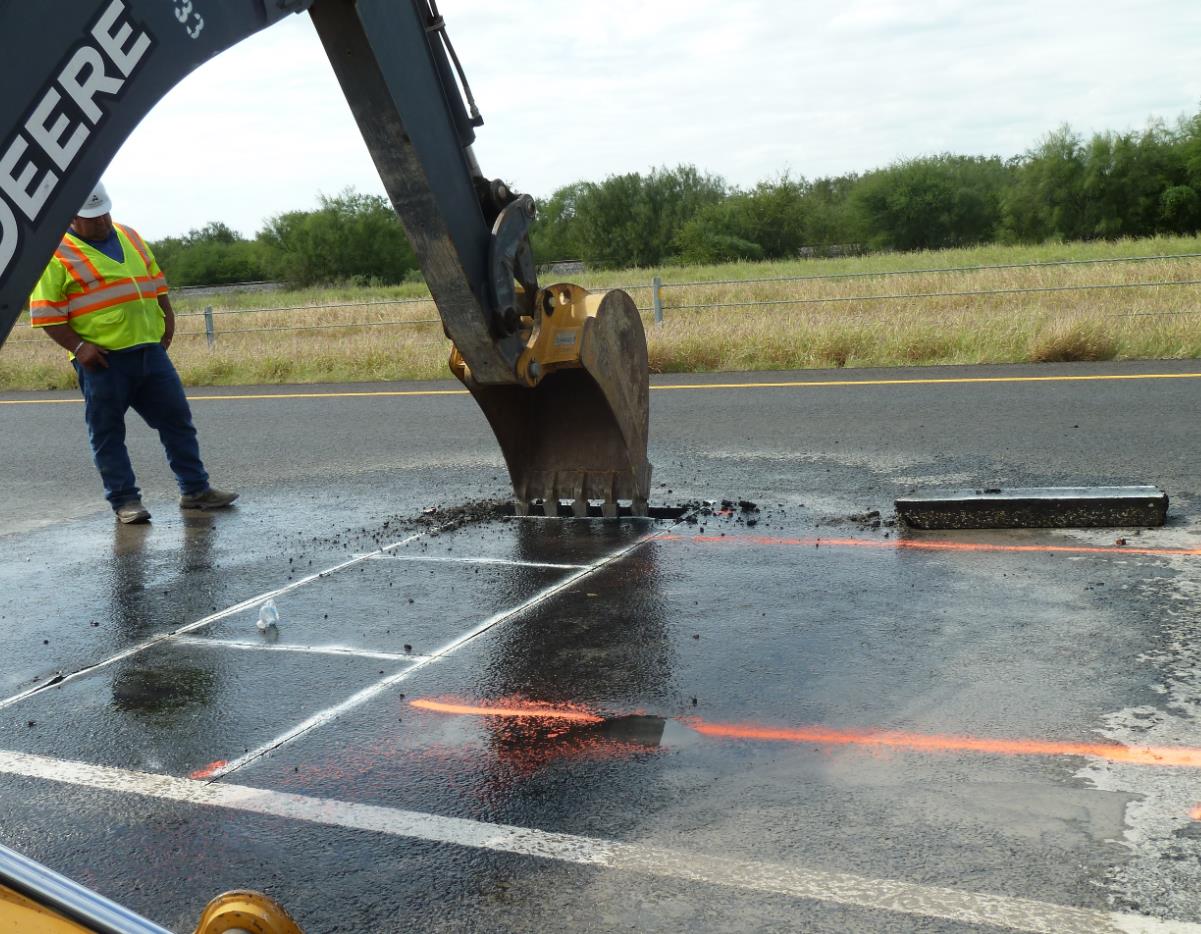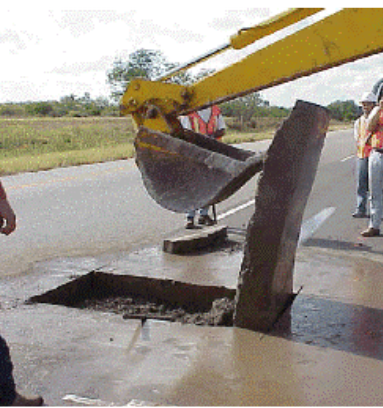5.2 Trenching Procedure
A trenching procedure has been developed to run tests and collect samples while minimizing disturbance to the base material. The saw cut pattern is shown in Figure 4-18. The size of each trench is 3 ft. × 12 ft. Each saw cut is deep enough to penetrate all the way through the HMA layer(s). A strip about 6 in. wide is cut and removed using hand tools from one end of the trench, as shown in Figure 4-19. This creates a slot for the backhoe to reach into and lift the HMA block without major disturbance to the base layer as shown in Figure 4-20. A saw cut is also made across the center of the trench so the HMA blocks can be removed without breaking.

Figure 4-18. Saw cuts for trenching.

Figure 4-19. Removing hot-mix asphalt (HMA) block with backhoe.

Figure 4-20. Flipping hot-mix asphalt (HMA) block out with backhoe.
After the HMA layer is removed and samples are collected, tests can be run and samples collected on the base layer.
The backhoe then digs out the base layer and a few inches of subgrade. Soils and base materials are bagged and taken for further laboratory evaluation, if needed. One of the transverse trench walls (at base and subgrade levels) is then smoothed using shovels, chisels, and brooms. Once a clean trench wall is achieved, the HMA layers are highlighted with chalk, and the base/subgrade layers are highlighted with string lines held with small nails. The thickness of each layer is then measured at regular intervals to determine its contribution to rutting.